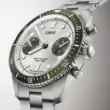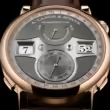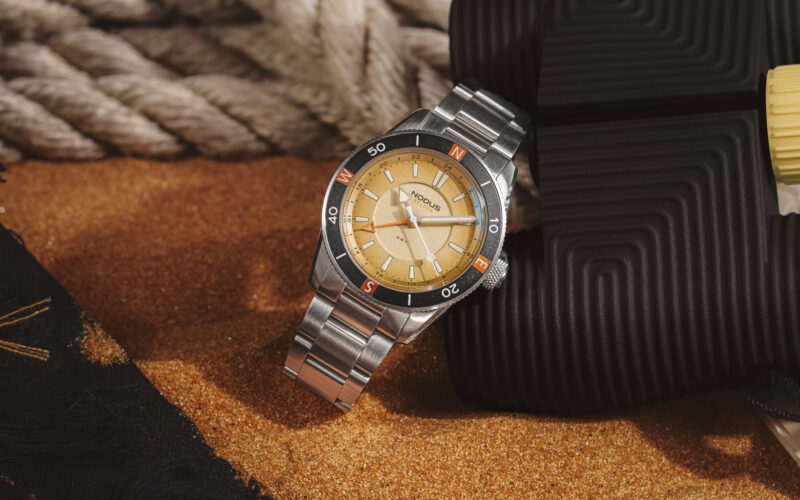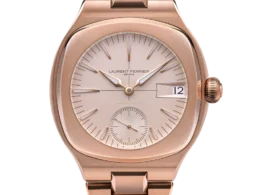Unlike the countless tool watches that will never leave the comfort of an office desk, the Nodus Sector Nomad is currently earning its stripes in one of the world’s most unforgiving environments.
This prototype timepiece isn’t just inspired by adventure—it’s living it, strapped to the wrists of modern explorers retracing the legendary footsteps of Roy Chapman Andrews through the Gobi Desert.
From Gobi To Wrist
Andrews, the wide-brimmed hat and revolver-wearing American explorer of the 1920s and 30s, made his mark on scientific research and paleontology in the Gobi’s harsh terrain. Believed to be the real-life inspiration for Indiana Jones, his legacy continues through the RC Andrews Legacy Camel Expedition—a remarkable journey featuring 30 explorers and scientists traversing the northern Gobi on camelback.
As this expedition unfolds (concluding June 30th), prototype Nodus Sector Nomad watches are being field-tested in conditions that would make most timepieces surrender.
This isn’t merely a marketing stunt. Nodus plans to gather real-world feedback from these desert adventurers to refine the design before its public release. The brand’s commitment to creating a truly functional tool watch echoes the approach taken with the Fears Experimental 01, custom-built for Angus Collins’ world record attempt. It’s refreshing to see a manufacturer prioritize authentic utility over hollow marketing claims.
The current prototype showcases a compelling blend of familiar Nodus design language with expedition-specific modifications. Built on the Sector II silhouette, the 40mm case houses a dial inspired by the Dive GMT, featuring the signature sector-style display with substantial lumed hour markers.
The 24-hour GMT scale sits elegantly on the flange, while a unidirectional rotating bezel departs from traditional dive timing to incorporate compass markings—a clever adaptation that transforms this tool from underwater navigator to desert guide.
Desert-Forged Design Philosophy
The aesthetic choices reflect the watch’s intended environment with remarkable thoughtfulness. The dial’s brown tones transition from center beige to golden orange for the GMT scale, creating a color palette that mirrors the desert landscape itself. The orange compass markings provide both functional clarity and visual cohesion, resulting in a design that’s simultaneously striking and appropriately subdued—much like the weathered gear of a seasoned adventurer.
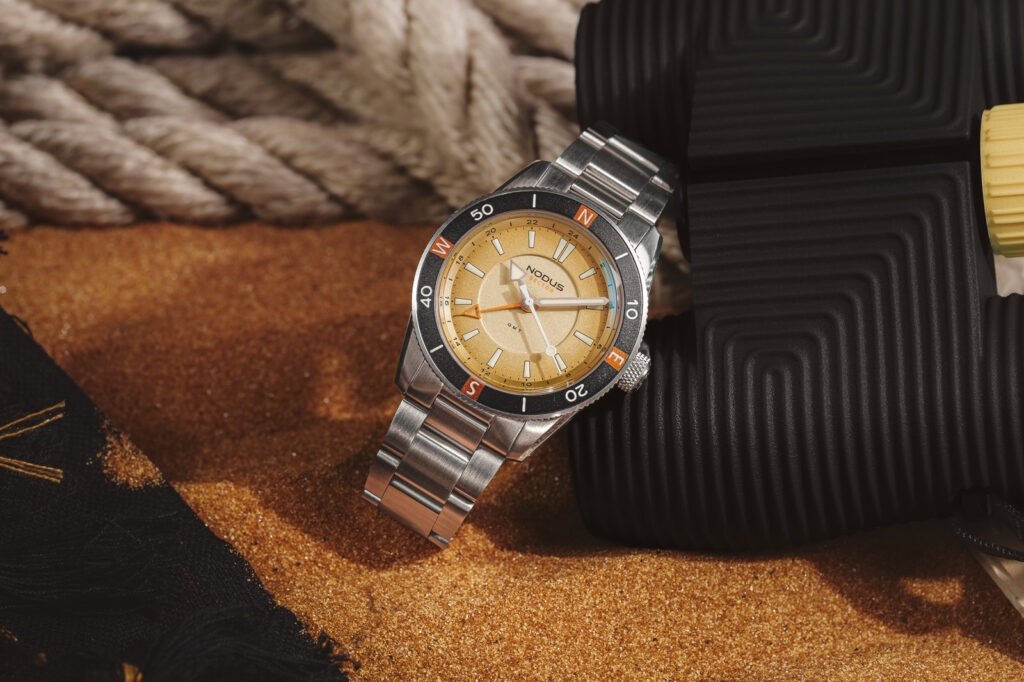
This compass-integrated bezel design recalls the Seiko ‘Tortoise’ Land, another dive watch successfully adapted for terrestrial exploration. However, the Nodus implementation feels more purposeful, less like a novelty and more like a genuine tool for navigation. The sector-style dial layout, with its clean geometry and excellent legibility, provides the foundation for quick time reading under challenging conditions.
Powering this desert warrior is the reliable Seiko NH34 GMT automatic movement, offering a practical 42-hour power reserve. Nodus has regulated the movement to achieve an impressive +/-10 seconds per day accuracy, demonstrating their commitment to precision even in prototype form. The 316L stainless steel case measures 40mm in diameter with 11.9mm thickness, providing substantial presence without overwhelming the wrist.
Water resistance reaches 100 meters—more than adequate for desert conditions where the primary concern is dust and sand rather than depth. The three-link stainless steel bracelet features Nodus’s proprietary NodeX clasp, ensuring secure wear during demanding activities.
Currently, the Sector Nomad exists solely in prototype form, with no confirmed retail price or release date. However, given the expedition’s conclusion at month’s end, watch enthusiasts shouldn’t wait long for updates. If Nodus maintains the current design direction while incorporating field-testing insights, this could become one of the most compelling adventure watches in recent memory—a timepiece that earned its credentials in actual exploration rather than marketing departments.
The Nodus Sector Nomad represents something increasingly rare: a watch designed for genuine purpose, tested in real conditions, and refined through authentic use. Whether it ultimately succeeds will depend on Nodus’s ability to translate desert-proven functionality into market-ready appeal without losing the soul that makes it special.
